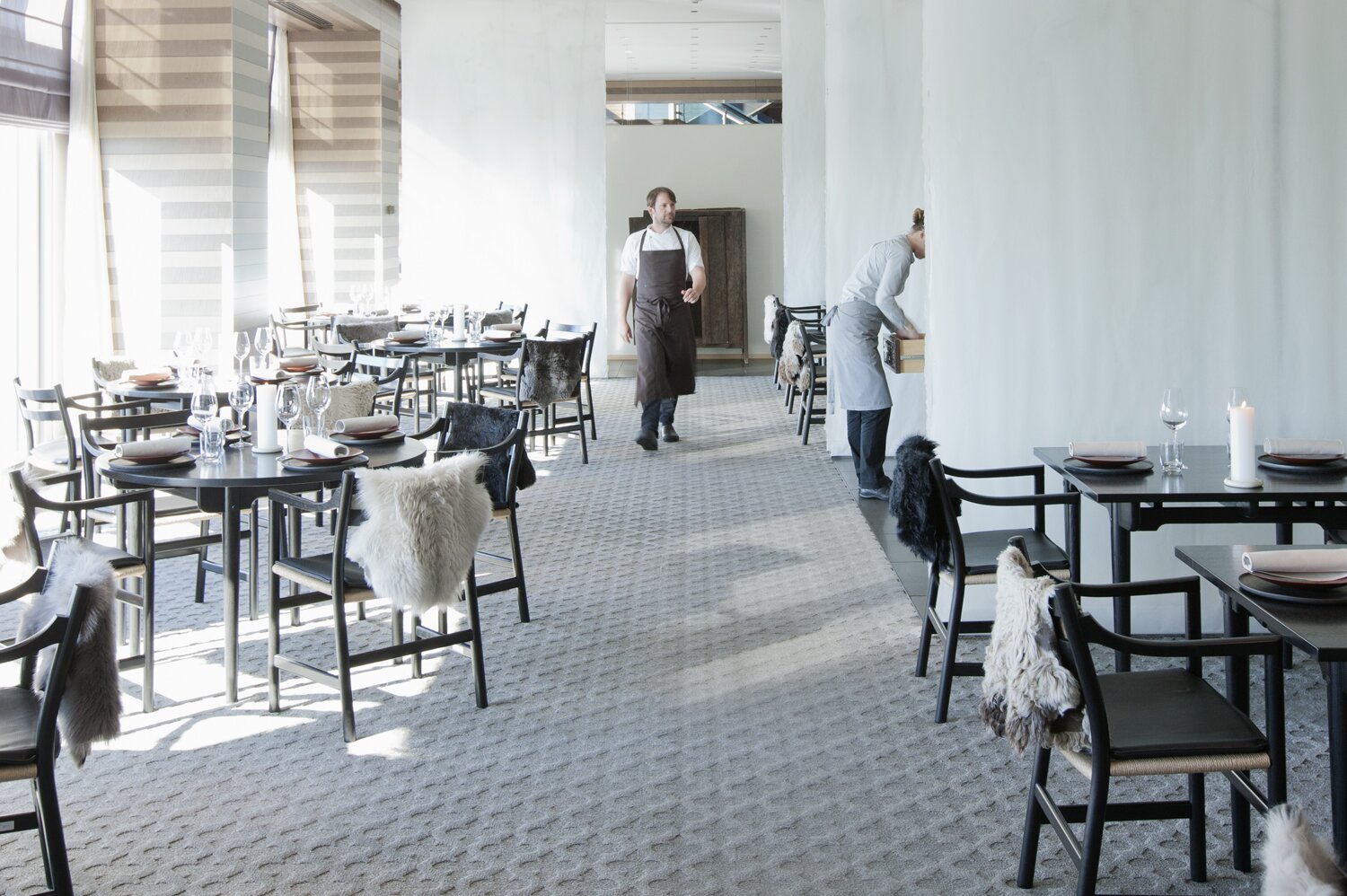What is left to do, when you’ve repeatedly conquered the World’s Best Restaurants list and helped create a movement that has revolutionized the way we think about food – all before the age of 40? For René Redzepi, the answer has been pop-up restaurants in Tokyo and Sydney, where he has tapped into local food cultures while profoundly reimagining them. Now, with Noma closing its doors, and emboldened with a new taste for adventure, the Danish chef already has his eye on the horizon.
On a January evening in 2015, a middle-aged man with perfect posture and a sharp blue suit waited patiently for the next course. Outside, the sun settled its phosphorescent sediment along Tokyo’s liquid skyline, but he was too accustomed to the sight to be moved by it. Instead, he gazed around the room’s newly unfamiliar features, pausing to consider the new daub wall that hid a private dining room, and the sleek lacquerware on the tables. Finally, a waitress approached and set a ceramic plate before him. On it was a small bowl of ice, and on that ice was a shrimp. It was, he could see, a botan ebi, a rare, profoundly expensive variety revered for the sweetness of its flesh. At first the man was too startled by the black dots scattered across the shrimp to recognize that the ebi was still alive. And so, out of respect either for the creature about to give its life to him for the chef who had dreamed up this provocation, he paused before reaching for the morsel. Just before he ate it, the man brought his hands to his side and bowed to the ebi.
Later that night, when the chef whose idea it was to serve the live ebi heard of that moment of reverence, a smile of pure joy would cross his face. It was exactly what René Redzepi had hoped might happen when, two years before, he had come up with the crazy idea of transporting the world-renowned restaurant Noma—and all of its 75 staff members—halfway around the world for, well, a pop-up. “I guess,” he said at the time, “we’re doing something right.”
At this late stage in the Food Revolution, the idea of the itinerant chef is nothing new. International symposia; four-hands dinners; culinary ‘gatherings’; TED talks: sometimes it seems a wonder when the person who made the restaurant famous is actually standing in its kitchen. Even the idea of temporarily relocating an entire staff is not wholly new: both Heston Blumenthal of the UK’s Fat Duck and the Roca brothers of Spain’s El Celler de Can Roca have taken their respective shows on the road. But Noma’s ‘residencies’—the word ‘pop-up’ hardly does it justice—are something else altogether. Both logistically and creatively, they are grander in scale and more profound in impact. Above all, they are riskier. In fact, were it not for one project on the horizon, you could say they were the riskiest thing René Redzepi has ever undertaken.
To understand what brought Redzepi to the Tokyo dining room, and then compelled him onward, you could look to Newtonian physics. Like a ball gathering speed as it rolls down a hill, his energy is kinetic: it thrives on motion and is the opposite of inertia. It was not enough for him to open a restaurant and so firmly entrench it on the World’s 50 Best Restaurants list that even two years after it lost the top spot, most cognoscenti still consider it the greatest in the world. Nor was it enough for him, after forging a new cuisine based solely on the Nordic region’s native ingredients, to influence through his public talks and his writing and especially through his astonishingly good cooking an entire generation of chefs: he also started a symposium, called MAD, to inspire his colleagues and then another, with Yale University, to train them to become better leaders. He is not a man to rest on
his laurels.
Yet it was only in 2013 that he began to take the idea of motion literally. The project occurred to him in a dark moment: in February, a norovirus outbreak at the restaurant sickened 63 diners. “As a restaurant, you live to make people happy,” he said the day the outbreak made the news. “To make them sick? That’s your worst nightmare.” And not only his, but his entire crew’s too. In the wake of the episode, which brought the mocking attention of media from around the world, Redzepi felt compelled to do something to restore his staff’s morale. Something that would bring them closer while reviving their enthusiasm and love for what they do. “My team was shattered,” Redzepi said. “We needed to be together.” He hit on the idea of moving them to a far-flung place, one with a deeply rooted food culture and a lot for them to learn. Japan, a country he had visited on a few occasions before and been deeply affected by, sprang to mind.
But it couldn’t be just a jaunt. “It would be easy to just go to Tokyo and cook the same menu there that we do at home,” he said. “But we want to really immerse ourselves in the place, to say something about it. And it’s a human experience we’re looking for. It’s about testing ourselves, coming closer together as a team, and making ourselves happy while, hopefully, we make a lot of other people happy too.”



